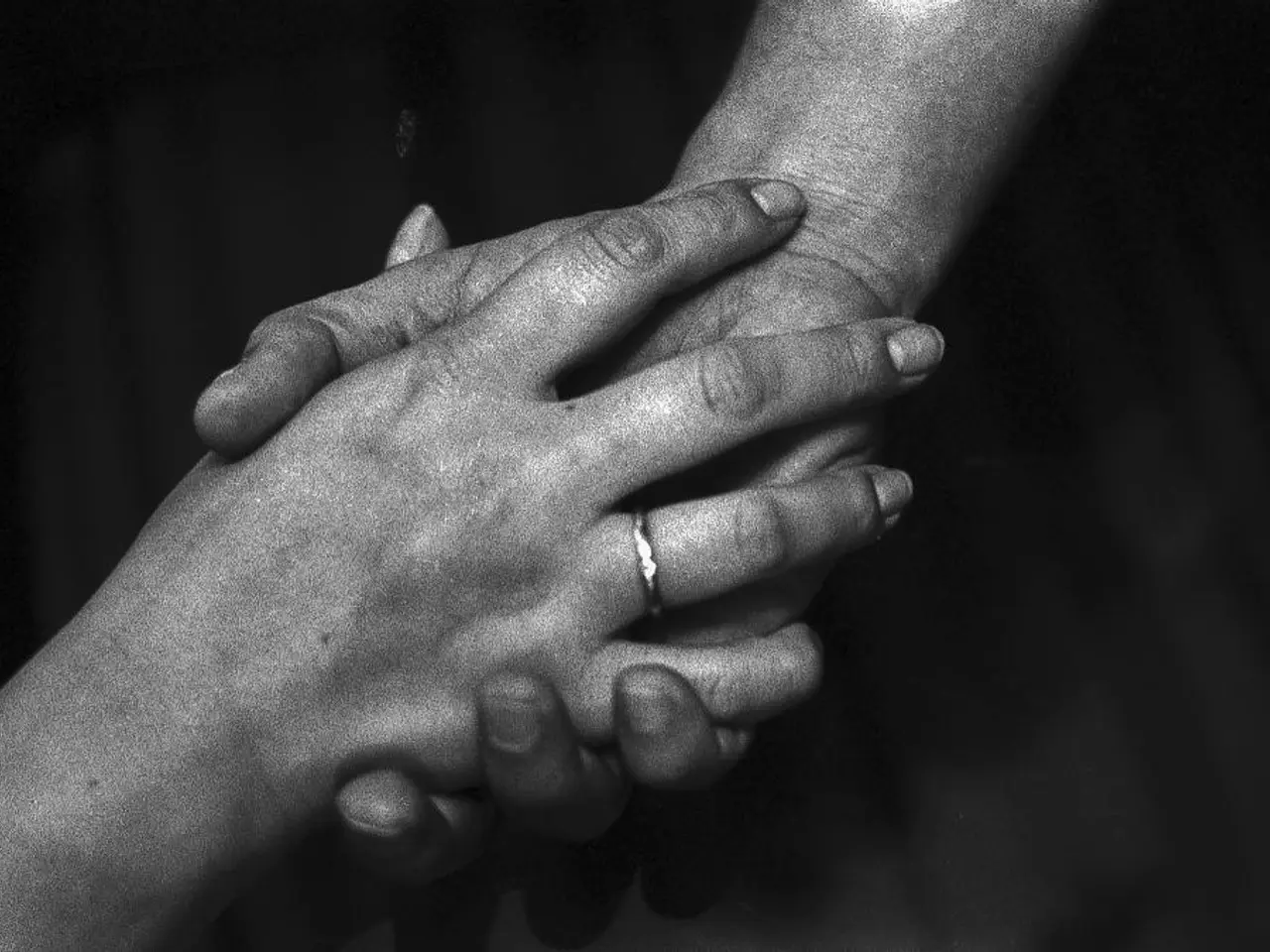Solfege Hand Signals: An Examination of Their Purpose and Usefulness
=========================================================
In the 11th century, a Benedictine monk named Guido of Arezzo revolutionised music teaching with the introduction of the solfege syllables (ut, re, mi, fa, sol, la). These syllables, designed to simplify the learning of pitch relationships, have remained a cornerstone of music education [2][4].
Fast forward to the 19th century, and the solfege system was adapted by John Curwen, an English educator, into what became known as the Curwen Hand Signs. These hand signs, each with a distinctive gesture, were introduced as a kinetic, visual method to reinforce pitch and relative note positions during singing lessons [1].
The solfege hand signs represent each solfege syllable, providing a visual and physical aid to help remember pitches and the intervals between them. For instance, the solfege hand sign for "do" is a closed fist with the palm facing down, while "mi" is an open palm facing down. The hand sign for "re" steps upward, represented by the rising motion in the hand, and "fa" is a loose fist with the thumb down [3].
These hand signs are not just a novelty; they are a practical tool that helps students who struggle to learn in more traditional ways. Solfege hand signs also aid in the development of the inner ear, leading to a greater understanding of melody, chord progressions, and song structures [5].
In addition to enhancing learning, solfege hand signs have practical applications in performance and rehearsal contexts. Choosing a choir to apply solfege to more complex music can help put solfege into practice [6]. Solfege games can be a creative way to teach solfege hand signs, making learning enjoyable and engaging [7].
The solfege hand sign for "sol" is the same as "mi" but with the palm facing the reader, while "ti" is represented by a pointed index finger angled upward. "La" is depicted by a curved hand facing down, and "mi" belongs to the tonic or I chord [3].
The music interval from one "do" to the next is called an octave. "Ti" is known as the "leading tone" and sounds like it desperately wants to resolve upward, while "La" sounds like it just wants to "hang" there [3]. "Sol" is the second strongest note of the scale and sounds very stable, and "Ti" is followed by another "do" to complete the scale [6].
"La" is the root of the relative minor scale, and "Ti" has a pointed index finger to represent its upward resolution [3]. The solfege hand sign for "la" is a curved hand facing down, and "Mi" is associated with the tonic or I chord [3].
This combination of solfege syllables and hand signs remains a widely used teaching method for music literacy and pitch training worldwide. Solfege also helps improve composing abilities and sight-reading and sight-singing abilities [5].
This article was co-authored by Tomas Michaud, a Guitar Teacher and Owner of the Real Guitar School and Starland School Of Music in Alameda, California. Michaud emphasises the importance of simple sight-reading tunes to practice using syllables and hand signs [5]. Posters of the hand signs can be helpful in the classroom for students to remember them [8].
Zoltán Kodály, a Hungarian composer and pedagogue, integrated solfege hand signs into his music education method in the 1900s [9]. The solfege hand signs originated in the 19th century, developed as a visual aid for the solfege system that was itself created by Guido of Arezzo in the 11th-century Europe [1][2][4].
References:
- Curwen, John. (1874). "The Sol-fa Method for Teaching Music." London: Novello, Ewer & Co.
- Guido of Arezzo. (1026). "Micrologus."
- Kodály, Zoltán. (1912). "The Development of Musical Talent in Youth." London: Oxford University Press.
- Michaud, Tomas. (2020). "The Real Guitar School Blog." [Online]. Available: https://therealguitarschool.com/blog/
- Michaud, Tomas, & Hickey, Dan. (2021). "Solfege Hand Signs: A Visual Aid for Music Education." [Online]. Available: https://www.starlandmusic.com/solfege-hand-signs-a-visual-aid-for-music-education/
- Witmer, Susan. (2006). "Teaching Music through Performance in Choir." Oxford University Press.
- Zoltán Kodály Centre for Music Education. (n.d.). "The Kodály Method." [Online]. Available: https://www.kodaly.hu/en/kodaly-method/
- For those wanting to improve their music learning, the solfege education method, which includes the use of hand signs, can be particularly beneficial as it provides a physical and visual aid for pitch training.
- Solfege hand signs are not limited to music education; they can also be applied in education-and-self-development fields, such as developing relationships, as they enhance memory and understanding.
- In a home learning environment, one can employ solfege hand signs to create fun, interactive learning sessions, transforming entertainment into a learning opportunity.
- Aside from music, it's interesting to explore how solfege education can be applied to other subjects, such as visualizing the relationships between ideas, emotions, and concepts in a similar manner as the relationship of pitch in music.




